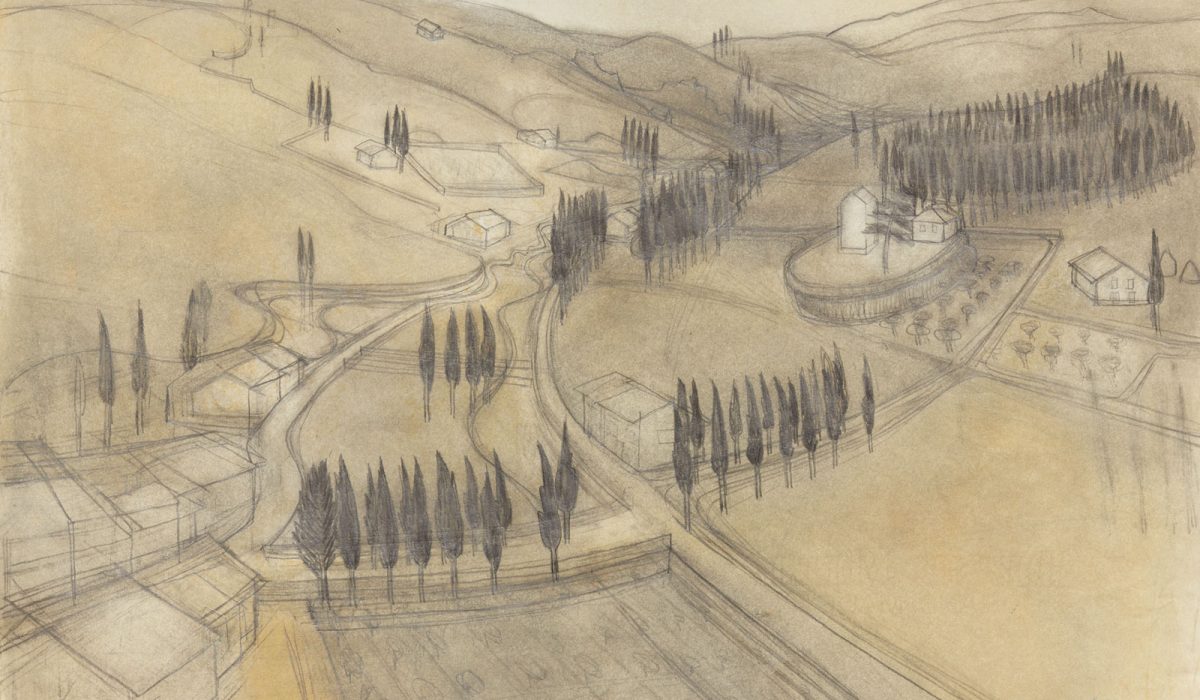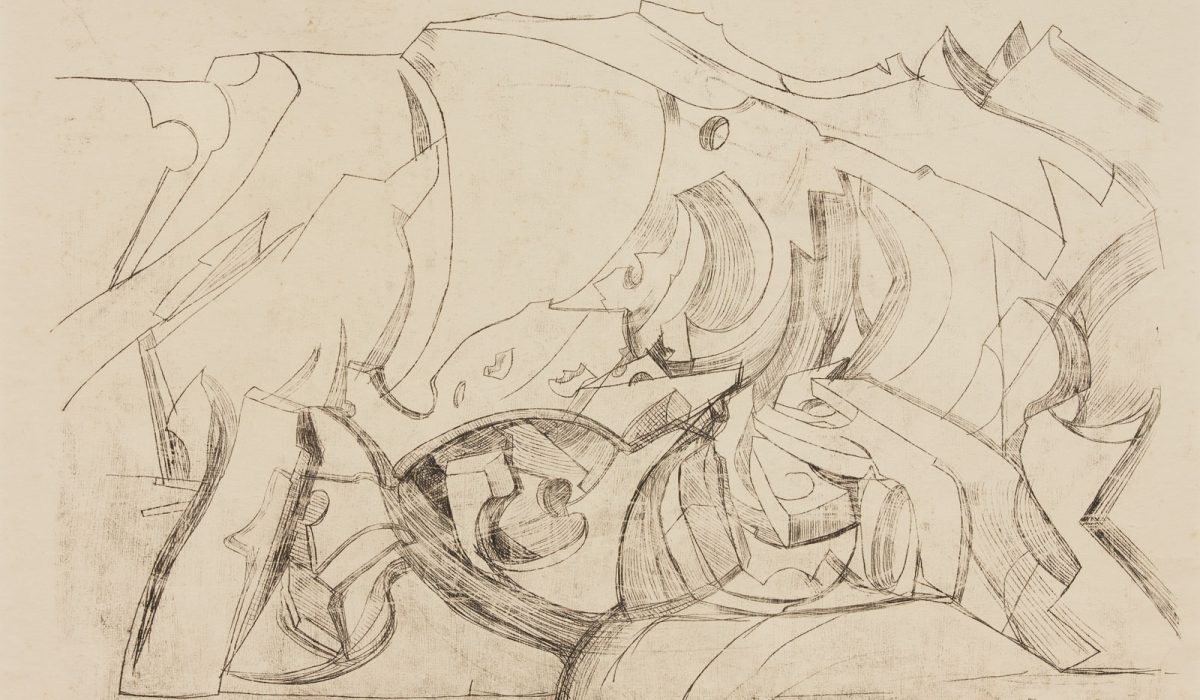WBG and Drawing

Fiesoli 13th June, 1954, Pencil and wash on paper, BGT1675
Some observations by Geoffrey Bertram, Chair of the Wilhelmina Barns-Graham Trust, on Wilhelmina Barns-Graham’s drawings:
With the exhibition Wilhelmina Barns-Graham: Sea, Rock, Earth and Ice open at the Graves Gallery, Sheffield after a successful appearance at the Jerwood Gallery, Hastings over the summer months, I’d like to focus on the drawings which form part a significant part of the show.
Drawing was central to Wilhelmina Barns-Graham’s art and was an essential part of her art school training. It was a key component of her creative toolbox, and she was extremely good at it. Her drawing teacher at Edinburgh College of Art, where she started in her art training in 1931 and from where she graduated in 1937, was Donald Moodie who taught her economy of line, to capture the complex character of her subject in a few swift lines. (Sir) William Gillies too was an inspiration. She shared his acute powers of observation and the confidence to select and simplify. In a conversation in 1992 Barns-Graham stated that “I have always been interested in drawing – it is a discipline of the mind. I seek to discover abstract shapes, accepting the subject’s demands often touching different moods……..Being in the presence of the power and awe of nature, be it to study the effect of the sun on glaciers in Switzerland, the rain on clay formations in Tuscany, the lava forms and disturbances in the volcanic areas of Lanzarote, to the passing of cloud shadows on the hills and sea of Orkney or the wind movements on sand in Fife, all wonders emphasising the realisation of the importance of being at one with nature. This is a contemplation of sensing out, feeling and understanding particular rhythms, not just on the surface but underground as in Cornwall.”
The art writer Mel Gooding, in his introduction for A Discipline of the Mind: The Drawings of Wilhelmina Barns-Graham, refers to her drawings as ‘….one of the most brilliantly distinctive bodies of graphic work in twentieth century British art…’ and continues ‘…she proved herself a draughtsman of visionary gift, capable of tracing, in precise linearity and expressive tone and colour, the dynamism and rhythm of things. Her drawing is a wonderfully flexible instrument, always alive to the structures and the informing energies of both the natural and the made world. It registers with extreme economy the dark monumental mass of a volcanic hill and the magical translucency of a glacier, the inner dynamics of up-rearing rock forms, the inner currents of a rolling sea-swell, the rhythmic repetition and overlap of incoming coastal waves, the diversity of organic tree forms, and the geometry of architecture in the space of a human landscape.’
Besides those included in the Graves Gallery show, drawings feature strongly in two exhibitions coming to the Scottish Gallery, Edinburgh and 108 Fine Art, Harrogate early next year, further testaments to Barns-Graham’s extraordinary abilities. In the former the featured Cornwall drawings were made mainly in the 1940s, within the first decade of her time in St Ives, and reflect her exploration of the town and its environs in a relatively straight forward manner. Although she never lost this ability to capture a scene, the noted groups of drawings post 1950 are more investigative of the structure of landscape. Following her Damascene moment on the Grindelwald Glacier, Switzerland, in 1949 which brought her into direct contact with a giant of nature that is a glacier, her drawings attempt to combine a sense of not only what is seen on the surface but what also lies beneath a landscape, attending to the forces that give it its shape and form. In Tuscany she found another landscape also, one shaped by Man rather than by the elements, in which marble quarries and clay workings are carved into the terrain.
The exhibition at 108 Fine Art also contains 1950s Italian drawings but has been broadened to include examples from her trips to the lava fields of Lanzarote in 1992 and 1993. It also includes a very rare Grindelwald Glacier offset drawing from 1951. In addition this show is accompanied by a small group of studies in acrylic and gouache that hint at further development; but it was rare, if at all, that drawings developed into paintings. “I seldom work from my drawings. The discipline used releases me in my paintings, to work more freely, expand with ideas and imagination involving joy in colour, texture and harmony, I start creating.”
There have been only two dedicated exhibitions on Barns-Graham’s drawings that the Wilhelmina Barns-Graham Trust has initiated since her death in January 2004; the aforementioned show A Discipline of the Mind (2009, Pier Arts Centre, Stromness, Orkney and tour) and Wilhelmina Barns-Graham: A Line of Drawing 1943-1993 at Art First, London in 2012. These new displays are opportunities for others to discover the graphic world of Wilhelmina Barns-Graham.
The Trust invites anyone wishing to study or write about Wilhelmina Barns-Graham to please get in touch with us at info@barns-grahamtrust.org.uk
The Edinburgh School and Wider Circle, Scottish Gallery, Edinburgh 5-26 January 2019
Earth, Ice, Rock and Sea – the art of Wilhelmina Barns-Graham, 108 Fine Art, Harrogate 2-23 February 2019

Glacier, 1951, Offset drawing on paper, BGT6012
